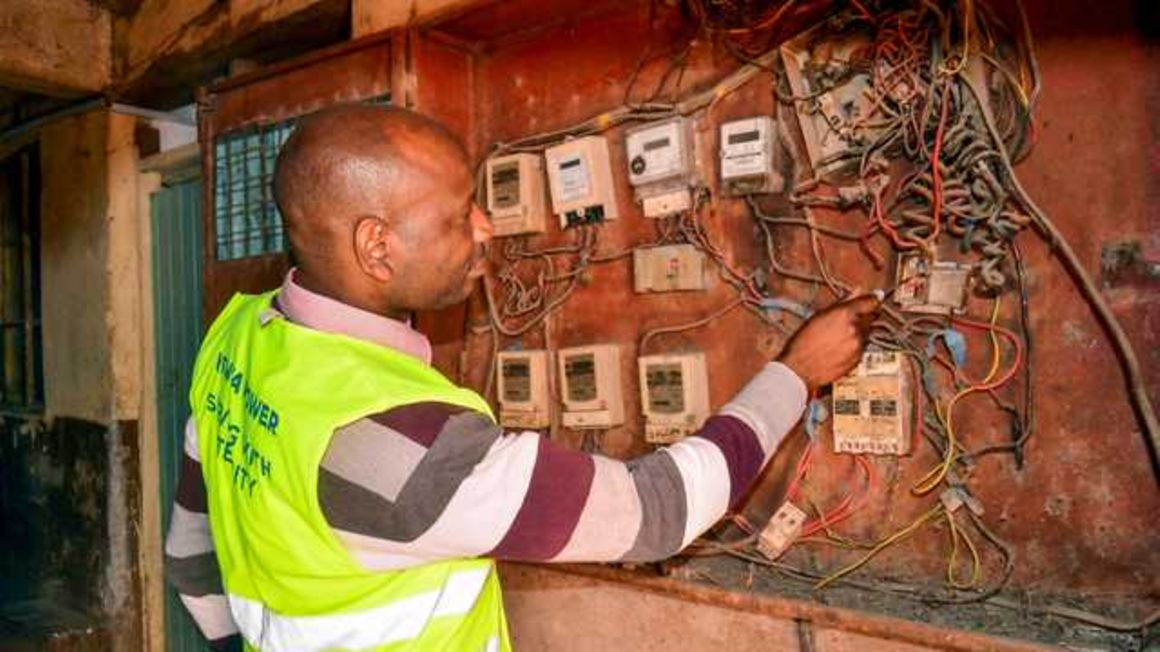A Kenya Power employee inspects a meter box at an apartment building in a Nairobi residential area last year during a raid on illegal power connections. PHOTO | FILE The reduction in consumer tariffs from an average of Ksh24 ($0.21) per kilowatt hour to Ksh16 ($0.14) per kilowatt hour is part of the recommendations by a 15-member Presidential Taskforce constituted to review the cost of electricity in the country as part of efforts to attract foreign direct investments (FDIs) and promote industrial growth.
The development comes as the electricity distributor which is 50.1 percent owned by the state faces a demand crisis due to its inflated electricity bills, corruption and increasing shift to solar energy by households and industries.
Kenya Power is also expected to adopt standard PPAs and proposed Government Letters of Support (LOS) along the lines of drafts provided by the taskforce and undertake a forensic audit on the procurement and system losses arising from the use of Heavy Fuel Oils.
Kenya is preparing for an over 33 percent reduction in electricity tariffs starting December 2021 to shore up power demand and save the struggling utility firm, Kenya Power, from imminent collapse.
The reduction in consumer tariffs from an average of Ksh24 ($0.21) per kilowatt hour to Ksh16 ($0.14) per kilowatt hour is part of the recommendations by a 15-member Presidential Taskforce constituted to review the cost of electricity in the country as part of efforts to attract foreign direct investments (FDIs) and promote industrial growth.
The development comes as the electricity distributor which is 50.1 percent owned by the state faces a demand crisis due to its inflated electricity bills, corruption and increasing shift to solar energy by households and industries.
Last year, the firm, which is listed on the Nairobi Securities Exchange said demand risks were a major concern to its operations as heavy-consuming industrialists seeking reliable and cheaper supply shift to solar power.
Last year, total electricity demand decreased to 11,603.6 GWh from 11,620.7 GWh in 2019,with domestic demand falling to 8,796.4 GWh from 8,854.0 GWh in the same period, according to the Economic Survey Report (2021).
Electricity sales to large and medium commercial category declined by 3.6 per cent to 4,281 GWh while transmission and distributive losses amounted to 2,790.7 GWh, or for 24.3 per cent of total domestic generation in 2020.
KP’s industrial customers — account for 54.8 percent of its sales revenues — but gradually shifting to […]
